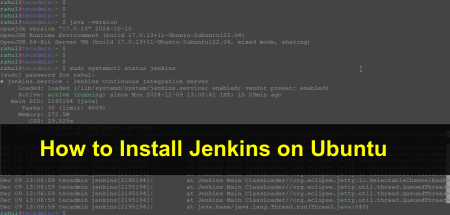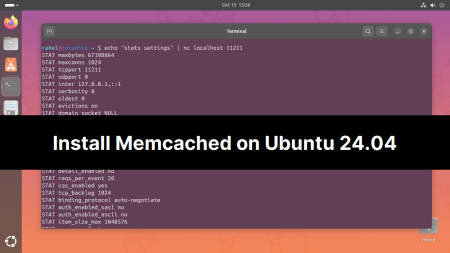Laravel is a favorite PHP web application framework that allows one to easily build modern, scalable web applications. The salient feature of Laravel is handling background jobs using a queueing system. Laravel queue workers have been built to process the queued jobs asynchronously in the background. This really can boost the performance and responsiveness of your web application.
While Laravel provides you with a straightforward command-line interface for handling queueing workers, managing them to run constantly in a production environment may be somewhat challenging. In this tutorial, we are going to look at how you can run Laravel queue workers using Systemd – the popular init system for Linux.
Prerequisites
Before we begin, you’ll need to ensure that your server meets the following requirements:
- A Linux-based operating system
- PHP version 7.2 or higher
- The Laravel framework installed and configured
- The Systemd init system installed and configured
Creating a Systemd Service
The first step in running Laravel queue workers with Systemd is to create a Systemd service file. This file will define the behavior of the queue worker and how it should be started, stopped, and restarted.
Create a new file in the “/etc/systemd/system/” directory with a .service extension, such as “laravel-worker.service”.
sudo nano /etc/systemd/system/laravel-worker.service
Add the following content to the file:
1 2 3 4 5 6 7 8 9 10 11 12 13 | [Unit] Description=Laravel Queue Worker After=network.target [Service] User=www-data Group=www-data Restart=always WorkingDirectory=/path/to/your/laravel ExecStart=/usr/bin/php artisan queue:work --sleep=3 --tries=3 [Install] WantedBy=multi-user.target |
Replace “/path/to/your/laravel” with your Laravel application directory. Also set your artisan command in “ExecStart” options.
Let’s break down this file and what each section means:
- Unit: This section defines the service unit and provides a brief description of what it does. The After parameter specifies that the service should start after the network target has been reached.
- Service: This section specifies the details of how the service should be run. The User and Group parameters specify the user and group that the service should run under. The “Restart” parameter specifies that the service should be restarted if it stops or crashes. The “ExecStart” parameter specifies the command that should be run to start the queue worker. In this case, we’re using the php binary to run the queue:work command with the
--sleep=3and--tries=3options. These options specify that the queue worker should sleep for 3 seconds between each job and should retry failed jobs up to 3 times before marking them as failed. - Install: This section specifies the run levels at which the service should be enabled. The WantedBy parameter specifies that the service should be enabled in the multi-user target, which is the default target for most Linux distributions.
Save the file and exit the editor.
Enabling the Service
First execute the following command to reload systemd daemon service. You need to run this command every time, you make any changes in service file.
sudo systemctl daemon-reload
To ensure that the Laravel queue worker starts automatically when the server boots up, we can enable the service using the following command:
sudo systemctl enable laravel-worker
This command will create a symlink in the appropriate directory to start the service automatically on boot.
Starting the Service
Now that we’ve created and activated the Systemd service file, we can start the service using the following command:
sudo systemctl start laravel-worker
This command will start the Laravel queue worker as a Systemd service. You can verify that the service is running correctly by checking its status:
sudo systemctl status laravel-worker
This command will display information about the service, including its current status and any recent log entries.
Controlling the Service
Once the service is running, you can control it using the standard Systemd commands. Here are some common commands you can use to control the Laravel queue worker service:
sudo systemctl stop laravel-worker: This command will stop the service.sudo systemctl restart laravel-worker: This command will restart the service.sudo systemctl disable laravel-worker: This command will disable the service from starting automatically on boot.sudo systemctl status laravel-worker: This command will display the status of the service, including whether it’s running or stopped, and any recent log entries.
Conclusion
Running Laravel queue workers with Systemd is an awesome way to make sure your background jobs always run smoothly, as well as efficiently, in a production environment. You will then want to automate the starting and stopping of the queue worker by adding a Systemd service file to your system and enabling it on boot.
The process of creating a Systemd service file for a Laravel queue worker, starting the service, enabling it on boot, and using some of the basic Systemd commands to control the service has been covered in this article. With this, now you have an opportunity to gain confidence in managing and scaling your Laravel applications with ease.


